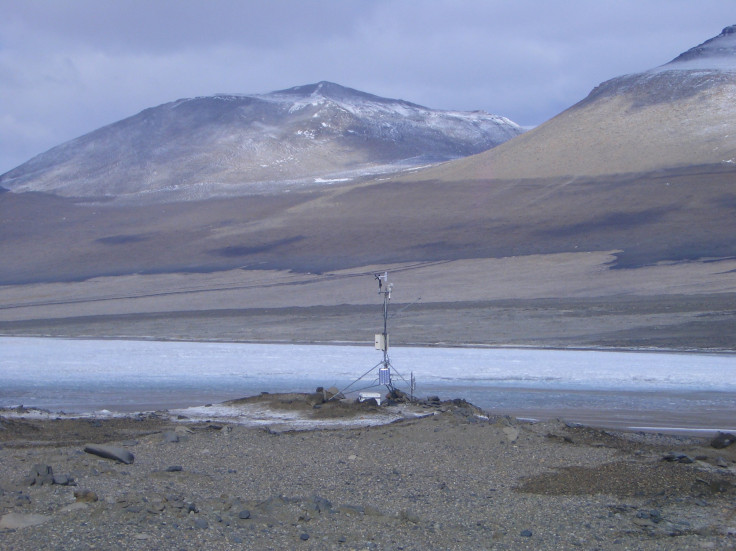NASA Scientists Discover Ancient Microbes In Remote Antarctic Lake

A group of scientists from NASA, the Desert Research Institute (DRI) in Reno, Nev., the University of Illinois in Chicago and nine other institutions have discovered an ancient community of bacteria in Lake Vida, one the most remote lakes in Antarctica, nearly 65 feet beneath the icy surface.
Scientists said that the discovery of life existing in one of Earth's darkest, saltiest and coldest habitats is significant because it helps them understand how life can sustain itself in extreme environments on the Earth and beyond.
Lake Vida is the largest of several unique lakes found in the McMurdo Dry Valleys. It contains no oxygen, is mostly frozen and possesses the highest nitrous oxide levels of any natural water body on the Earth.
A briny liquid, which is approximately six times saltier than seawater, percolates throughout the icy environment where the average temperature is minus 8 degrees Fahrenheit.
"Our knowledge of geochemical and microbial processes in lightless icy environments, especially at subzero temperatures, has been mostly unknown up until now,” said Alison Murray, a molecular microbial ecologist and polar researcher at the DRI. He is also the lead author of the report that was published online Nov. 26 in the Proceedings of the National Academy of Sciences Early Edition.
“This work expands our understanding of the types of life that can survive in these isolated, cryoecosystems and how different strategies may be used to exist in such challenging environments,” said Murray.
The study revealed that despite the very cold, dark and isolated nature of the habitat, the saltwater harbors a surprisingly diverse and abundant variety of bacteria that survive without a current source of energy from the Sun.
Previous studies of Lake Vida dating back to 1996 indicate the brine and its inhabitants have been isolated from outside influences for more than 3,000 years.
"This system is probably the best analog we have for possible ecosystems in the subsurface waters of Saturn's moon Enceladus and Jupiter's moon Europa," said Chris McKay, a senior scientist and co-author of the paper at NASA's Ames Research Center, Moffett Field, Calif.
Scientists had developed stringent protocols and specialized equipment for their 2005 and 2010 field campaigns to sample from the lake brine while avoiding contaminating the pristine ecosystem.
According to geochemical analyses, chemical reactions between the brine and the underlying iron-rich sediments generate nitrous oxide and molecular hydrogen. The latter, in part, may provide the energy needed to support the brine's diverse microbial life.
NASA has said that additional research is underway to analyze the abiotic, chemical interactions between the Lake Vida brine and its sediment, in addition to investigating the microbial community by using different genome sequencing approaches.
Scientist also believe that the results of the study could help explain the potential for life in other salty and low temperature environments beyond the Earth, such as purported subsurface aquifers on Mars.
© Copyright IBTimes 2024. All rights reserved.












